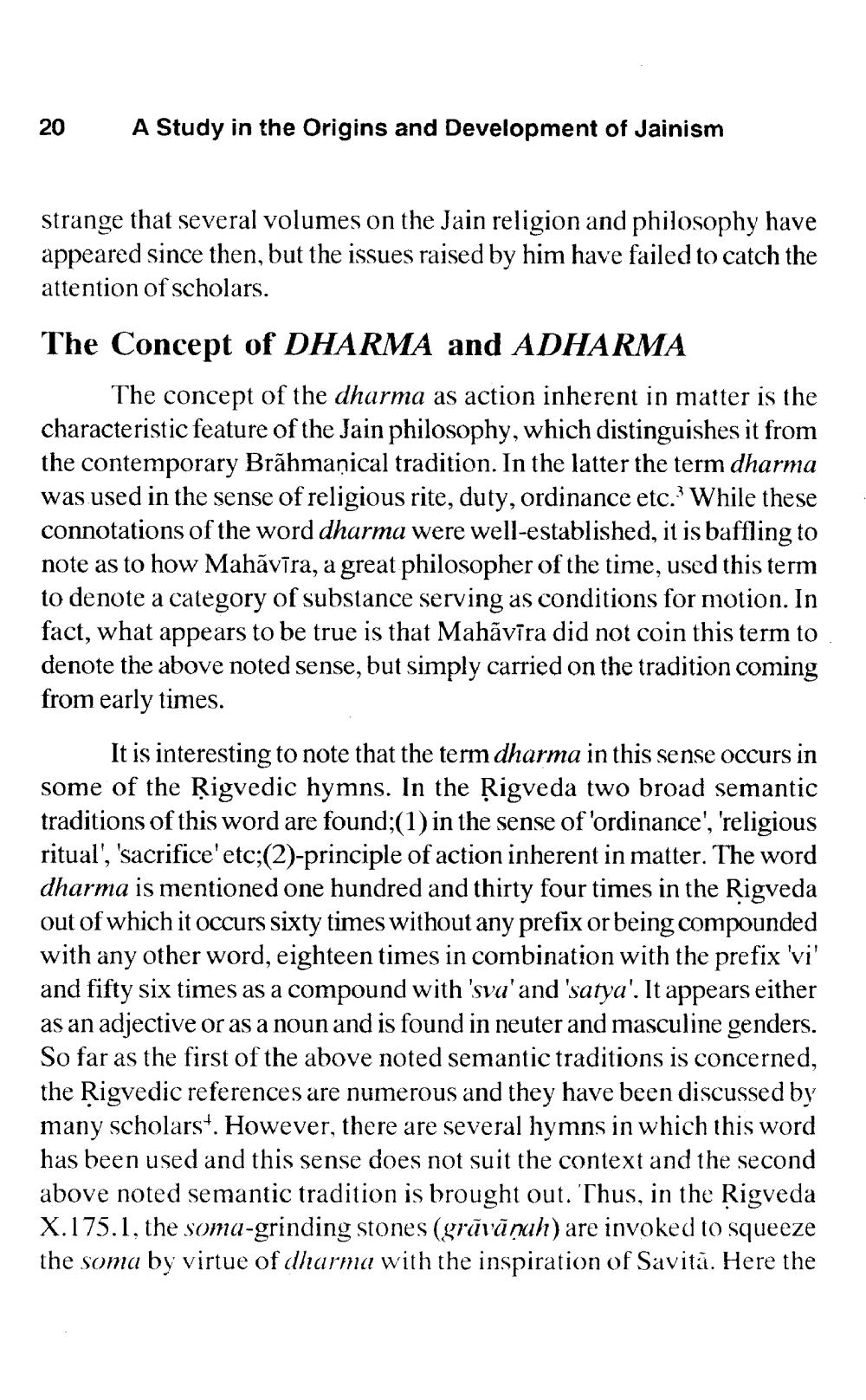________________
20
A Study in the Origins and Development of Jainism
strange that several volumes on the Jain religion and philosophy have appeared since then, but the issues raised by him have failed to catch the attention of scholars.
The Concept of DHARMA and ADHARMA
The concept of the dharma as action inherent in matter is the characteristic feature of the Jain philosophy, which distinguishes it from the contemporary Brāhmaṇical tradition. In the latter the term dharma was used in the sense of religious rite, duty, ordinance etc. While these connotations of the word dharma were well-established, it is baffling to note as to how Mahāvīra, a great philosopher of the time, used this term to denote a category of substance serving as conditions for motion. In fact, what appears to be true is that Mahavira did not coin this term to denote the above noted sense, but simply carried on the tradition coming from early times.
It is interesting to note that the term dharma in this sense occurs in some of the Rigvedic hymns. In the Rigveda two broad semantic traditions of this word are found;(1) in the sense of 'ordinance', 'religious ritual', 'sacrifice'etc;(2)-principle of action inherent in matter. The word dharma is mentioned one hundred and thirty four times in the Rigveda out of which it occurs sixty times without any prefix or being compounded with any other word, eighteen times in combination with the prefix 'vi' and fifty six times as a compound with 'sva'and 'satya'. It appears either as an adjective or as a noun and is found in neuter and masculine genders. So far as the first of the above noted semantic traditions is concerned, the Rigvedic references are numerous and they have been discussed by many scholarst. However, there are several hymns in which this word has been used and this sense does not suit the context and the second above noted semantic tradition is brought out. Thus, in the Rigveda X.175.1, the soma-grinding stones (grāvānuh) are invoked to squeeze the soma by virtue of dharma with the inspiration of Savitā. Here the




